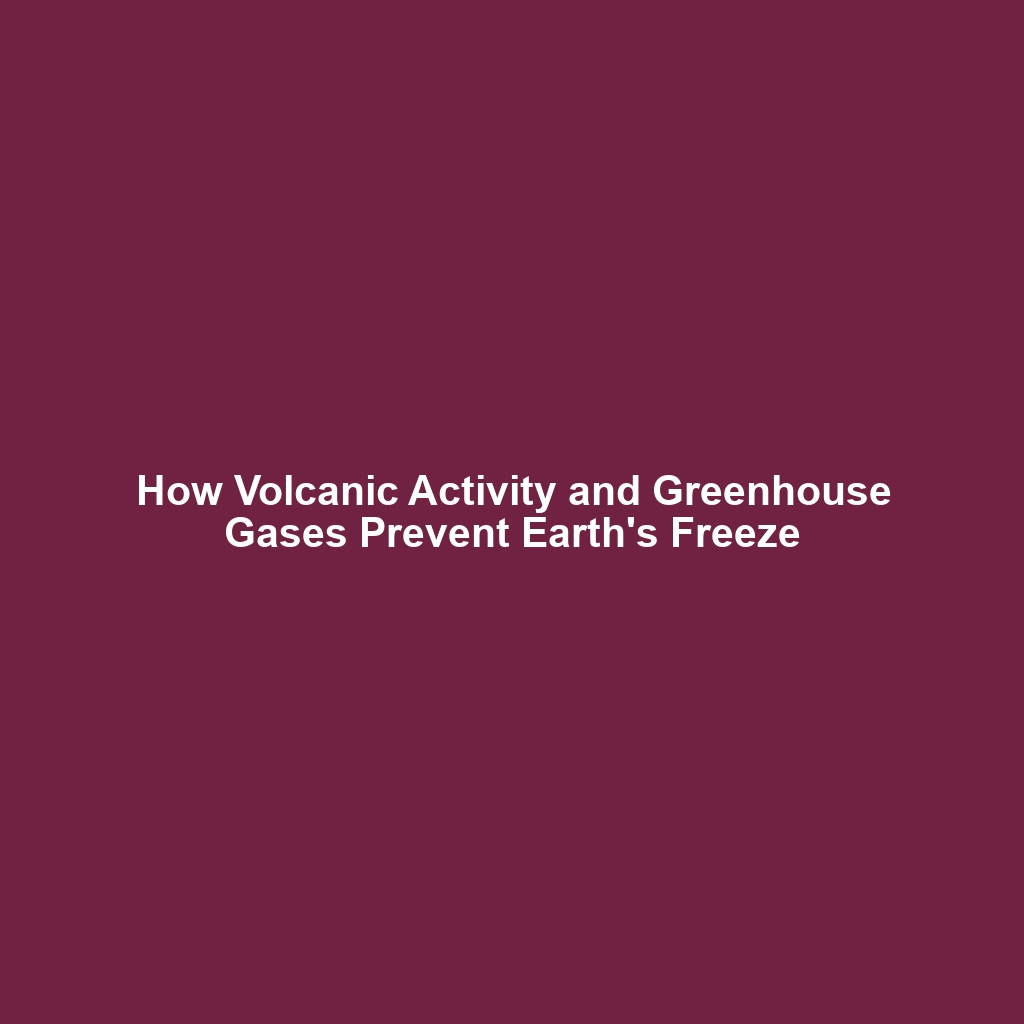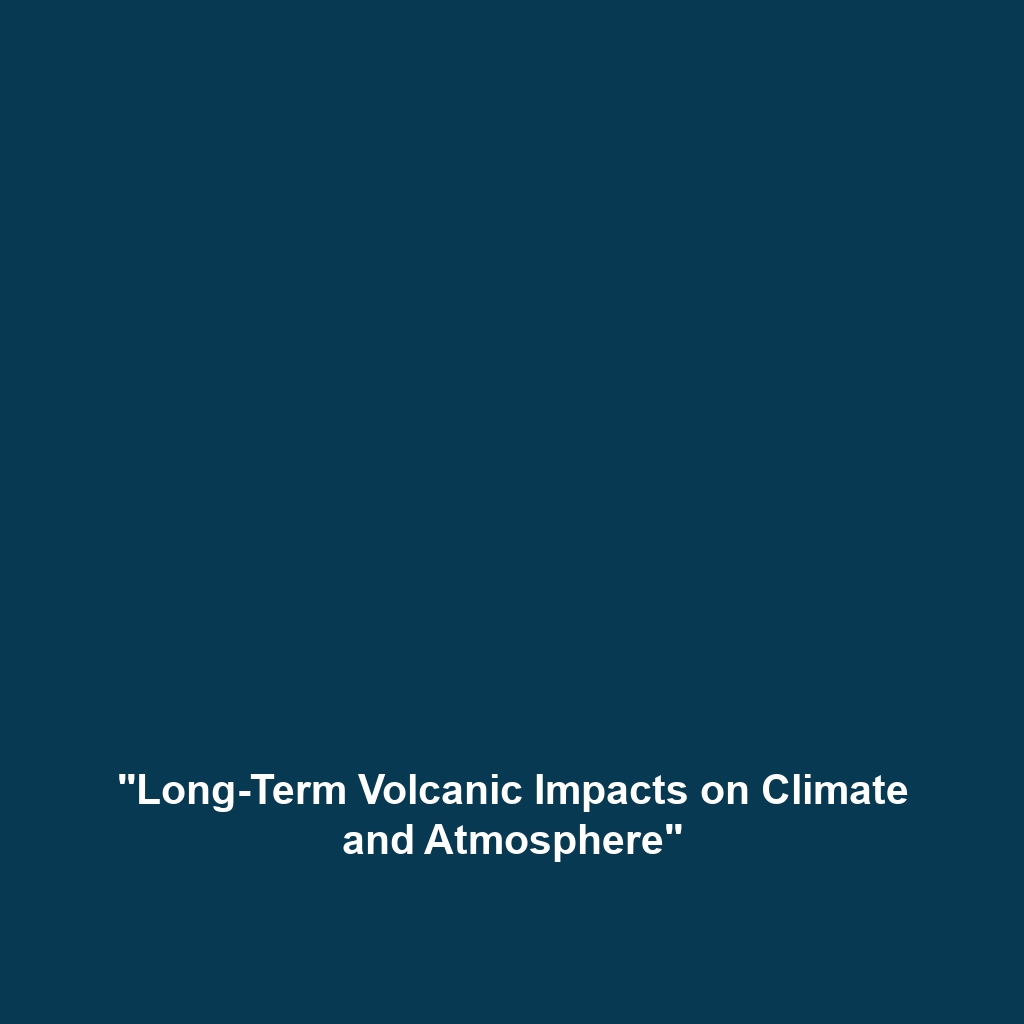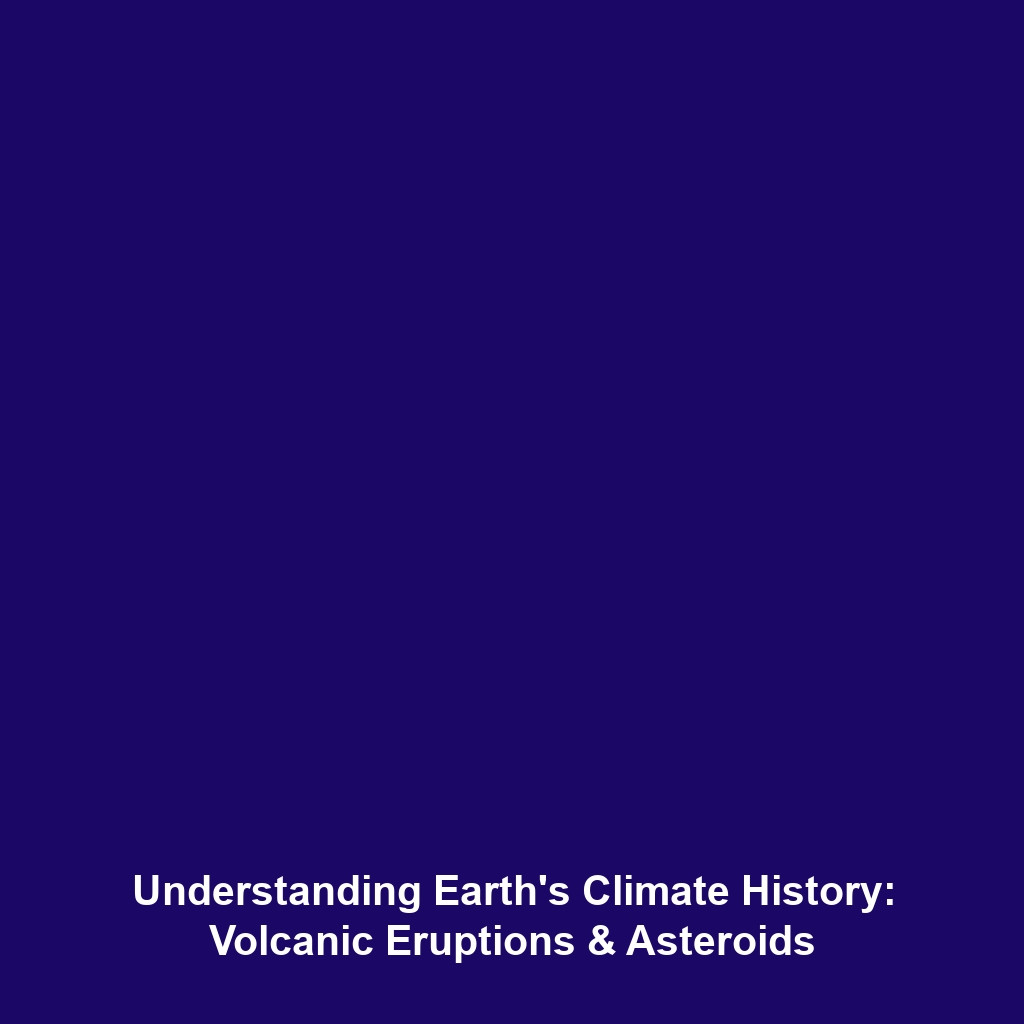The Role of Volcanic Activity and Greenhouse Gases in Preventing the Earth from Freezing Completely
The interaction between volcanic activity and greenhouse gases is a significant factor in Earth’s climate history, influencing the planet’s ability to maintain habitable temperatures. Volcanic eruptions release large volumes of gases, including carbon dioxide (CO2) and sulfur dioxide (SO2), which contribute to atmospheric changes and climate regulation. Understanding this relationship is crucial for grasping how Earth has avoided catastrophic freezing events throughout its geological history. This article examines the complex mechanisms by which volcanic activity and greenhouse gases serve to prevent global freezing, impacting our understanding of climate history.
Key Concepts
The study of how volcanic activity and greenhouse gases prevent the Earth from freezing involves several key concepts:
Volcanic Activity
Volcanic eruptions play a pivotal role in Earth’s climate by emitting greenhouse gases such as carbon dioxide. These gases help to trap heat in the atmosphere, counteracting cooling effects from activities such as glaciation.
Greenhouse Gases
Greenhouse gases, including CO2 and methane (CH4), are critical contributors to the greenhouse effect, which warms the Earth by trapping heat. Their concentrations directly correlate with climate conditions throughout geological epochs.
Climate History Context
The interplay between volcanic activity and greenhouse gases can be traced through climate history, indicating how these factors have influenced past temperatures, ice ages, and species survival. This context is essential for understanding the long-term implications of current climate change.
Applications and Real-World Uses
The relationship between volcanic activity and greenhouse gases has significant real-world applications in climate science:
- Climate Modeling: Understanding past volcanic eruptions assists in predicting future climate scenarios.
- Environmental Policy: Data on greenhouse gas emissions from volcanic activity informs policy measures aimed at climate stabilization.
- Geothermal Energy: Exploring volcanic areas for geothermal energy showcases practical uses of volcanic activity beyond climate effects.
Current Challenges
There are several challenges and limitations in studying the role of volcanic activity and greenhouse gases in climate history, including:
- Inconsistent data availability on past volcanic eruptions and gas emissions.
- Difficulty in isolating volcanic influences from other climatic factors.
- Technical limitations in modeling complex atmospheric interactions.
Future Research and Innovations
Upcoming research aims to address existing challenges and further our understanding of volcanic activity’s role in climate history, such as:
- Next-Generation Climate Models: Incorporating advanced computer simulations to better predict future climate based on past volcanic activity.
- Remote Sensing Technology: Utilizing satellite technology to monitor volcanic gases and their effects on the atmosphere in real-time.
- Research in Geochemistry: Investigating the chemical compositions emitted during volcanic eruptions to assess long-term developmental environments.
Conclusion
The intricate relationship between volcanic activity and greenhouse gases plays a critical role in preventing the Earth from freezing and significantly contributes to our understanding of climate history. As research advances, it is crucial to continue exploring these dynamics to inform climate policies and ensure a sustainable future. For further reading on climate influences, consider exploring articles on the impact of greenhouse gases on global temperature trends and the historical significance of ice ages.


